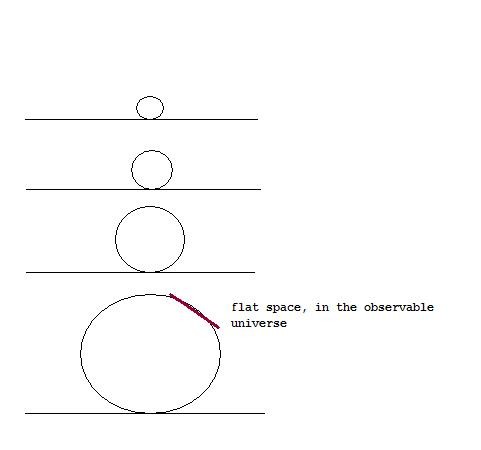
frequency (of spectral lines) could be observed. This implied that the greater the distance was, the more "streched" the lightwaves are.
This phenomenon is attributed to the expansion of space itself !
In some books, you might have read, that galaxies further away, flee faster from us. This is not neccesarilly implied
by the redshift. What is likely to be true, is that the light has travelled through more and more streched space,
and thus gets more and more redshifted.
Now please note this remark: People often visualize the expansion of the Universe, as a sort of sphere that expands,
(or gets bigger and bigger), in the "Nothingness". That vision is not entirely ok. Take a look a the figure on the left.
Here, you see the surface of a balloon where dots are placed on the surface. If we inflate the balloon, the distance
between the dots increase. Actually, space itself inflates, just like the rubber surface of the balloon in the picture.
So, any observer in any galaxy, would see that the other galaxies (on a larger scale) flee away from them.
Now, that's a 2 Dimensional analog of the 4 Dimensional space-time Universe we live in. Really, the surface of the balloon
is a 2D curved "sheet". If you would like to visualize the expansion of the Universe, just "think away" the surroundings
of the balloon, and make mental transition of 2D to 4D (which is quite impossible to do ;-).
Even from the observed expansion alone, it is very tempting to speculate on a common Origin, and thus a "Big Bang" scenario
is stronly suggested. In 1948, George Gamow and Ralph Alpher formulated a (hot) Big Bang theory.
(Remarks: We should not forget the idea of the "primordeal" atom of Lemaitre in 1931.
Also, Alexander Friedmann already proposed in 1922, that the Universe might be expanding.
The remarkable findings of de Sitter around 1920, will also be touched in section 8).




